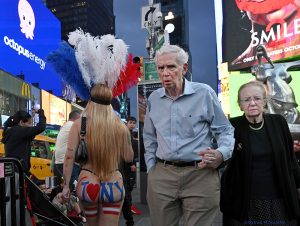Many years ago, while I was a staff photographer at the Boston Globe, I was assigned to Cape Verde to cover a story on education. The resulting piece, a lengthy feature in the Sunday edition of the Boston Globe, included a front-page image that played a significant role in an incident that cemented my beliefs in the utmost importance of acting ethically when performing my duties as a photojournalist.
Just to be clear, I am diametrically opposed to AI- generated images being use by photojournalists. If you want to read more about it then go to my previous blog AI- Generated Images… Beware of Wolves in Sheep’s Clothing.
A couple of days after the Cape Verde story was published, a reader questioned the authenticity of one of my photos, accusing me of having altered its colors. This single instance of doubt threatened to unravel my career, casting a shadow of mistrust over my credibility as a photojournalist.
The incident not only highlights the fragility of trust in our profession but also underscores the exponentially multiplying risks we face with the advent of AI-generated images. It’s a wake-up call for all of us who value the integrity of visual storytelling.
The photograph in question captured a poignant scene in the kitchen of a humble Cape Verdean home. Positioned within the frame were three individuals: an 18-year old Cape Verdean young man and his parents as they ponder upon the young man’s uncertain future.

Due to the room’s limited natural lighting, the only sources of illumination were a door slightly ajar on the far left of the frame and a small window located somewhere behind me. Consequently, most of the colors in the scene appeared subdued, apart from the vibrant scarf adorning the woman and the bright-green door frame in the background.
A couple of days after the story was published, I was called into the Director of Photography’s (DOP) office and I was told to bring all my Cape Verde photos.
As I walked in, I was surprised when I noticed her deputy director sitting there too. Something was amiss.
The DOP proceeded to explain, “A reader has raised doubts about the authenticity of your photograph, questioning why you felt the need to alter the scene and manipulate the colors.”
In that moment, a knot of apprehension tightened in my gut. It wasn’t because I had done anything wrong, but rather because my journalistic integrity was being questioned.
However, upon examining my photos, they quickly realized it was a trick of light on-site. Additionally, the variation in color reproduction between newspaper prints (CMYK) and our digital cameras (RGB by default) accounted for the slight difference in the photo’s appearance. Essentially, the photo I captured underwent a subtle change when reproduced in newsprint.
This awkward situation forced me to contemplate the power of perception and the potentially devastating consequences that even a single doubt could unleash.
Throughout my years in the profession, I’ve heard countless horror stories of photojournalists losing credibility or jobs over allegations of color manipulation or photo tampering. The chilling accounts that truly shook me involved those who deceitfully altered the truth for personal gain. These individuals rightfully faced consequences, as they violated the core principles of photojournalism.
Imagine, this was before the era of AI and the concept of using technology to manipulate images would have been considered science fiction. However, it made me contemplate the future implications. If a single person’s accusation, questioning the color accuracy in one of my shots, had such a significant impact, what would occur when technology advanced to the point where photos could be effortlessly fabricated?
This incident sparked a prescient realization that technology would continue to advance, and the challenges surrounding truth in visual storytelling would only grow more profound in the years to come. It’s alarming to think that one moment could have jeopardized not just my job and career, but also my reputation, all because someone believed I had manipulated reality.
Early in my career, I had mentors who instilled in me the importance of living by the National Press Photographer’s Association Code of Ethics. And that’s exactly what I’ve always done, regardless of whether someone is watching or not.
The bottom line in the realm of photojournalism is that truth, facts, and the accurate depiction of what was there should always prevail.
Now, let’s pause for a moment and consider the profound impact a seemingly small gesture, like a phone call from a reader questioning the authenticity of an image, could have had on my entire career. Now, let’s extend that contemplation to the potential consequences and wide-ranging ramifications that could emerge if AI-generated images become widespread in our news feeds.
In a world where photos can be effortlessly concocted out of thin air, the question of maintaining trust becomes paramount. It’s a concerning thought. As photojournalists, we must remain stalwarts of the truth. As readers, we must stay vigilant, well-informed, and constantly mindful of the repercussions that come with not paying close attention and taking things at face value.




